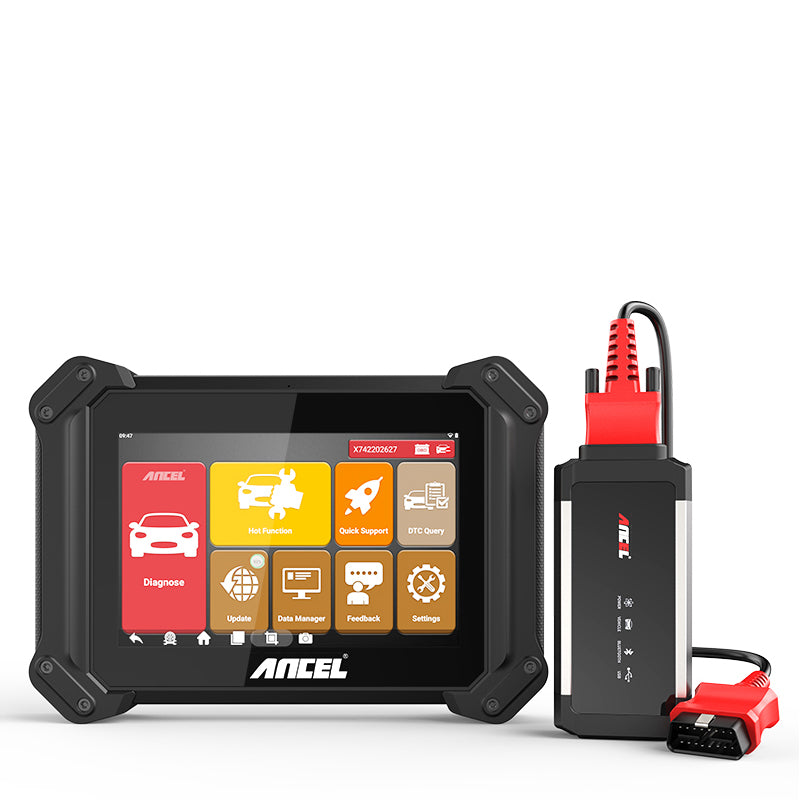In today’s vehicles, the onboard diagnostic system plays a crucial role in keeping things running smoothly.
One of its key functions is generating Diagnostic Trouble Codes, or DTCs, which act as signals that something might be wrong with your car.
These codes are designed to help identify specific issues with critical systems, from the engine to the transmission, and everything in between.
How DTC Works
The process behind DTCs is quite straightforward. Modern vehicles are equipped with a network of sensors that monitor the performance of various systems, such as the engine, fuel system, exhaust system, and more.
When one of these sensors detects an abnormal condition—such as a misfire in the engine or a problem with the exhaust system—it sends a signal to the car’s onboard computer. The OBD system then generates a unique DTC that corresponds to the specific issue, storing the code in the vehicle's memory.
These codes can be retrieved by using an OBD reader, providing a clear starting point for diagnosing the problem. Essentially, the OBD system acts as an early warning system, alerting you to potential issues before they escalate.
Related Reading: Engine Code: A Quick Guide
Common DTC Codes and What They Mean
DTCs follow a standardized format, making it easier to understand the type of problem your car might be facing. The code consists of a letter followed by four digits, such as P0301 or C1234.
-
P stands for Powertrain (engine and transmission).
-
B indicates Body (e.g., airbags or seatbelt systems).
-
C refers to Chassis (suspension or braking systems).
-
U means Network (communication between various systems).
For example, a common powertrain-related code is P0301, which indicates a misfire in cylinder 1 of the engine. Another typical code, P0420, signals that the catalytic converter is underperforming. While these are just a few examples, there are thousands of possible DTCs, each tied to a specific malfunction.
$439.99
Why DTC Important
These codes serve as an early alert system, notifying you about potential issues before they turn into costly repairs. Rather than waiting for a check engine light to come on or experiencing a breakdown, you can use a simple OBD scanner to monitor your car’s health regularly. By catching problems early, you’re not only extending the life of your vehicle but also avoiding the stress and expense of major repairs that could have been prevented.
How to Read and Interpret DTCs
The first step is to obtain car diagnostic tool or a code reader, both of which are widely available online or at automotive stores.
To use the scanner, locate the OBD-II port under the dashboard near the driver’s seat. It’s usually near the steering column, just below the dashboard. Once plugged in, turn the ignition key to the "on" position (without starting the engine), and the scanner will begin communicating with your vehicle's onboard computer system.
The scanner will pull up a list of any stored trouble codes, which will appear on the display screen. Each code will usually consist of a letter and four digits. The first letter (P, B, C, or U) indicates the system affected—Powertrain (P), Body (B), Chassis (C), or Network (U).
Once you have the DTC, you’ll often see a brief description of the issue. However, the code alone may not provide enough detail to make a full diagnosis. While a scanner can tell you there’s a misfire, it won’t necessarily tell you whether it's a faulty spark plug, fuel injector, or another underlying issue causing the problem. This is where interpreting the code correctly comes into play.
Here are some of our other blog posts where we explain the meaning of specific car codes.
Camshaft Position Sensor 101: How to Fix P0340 Code, VDC On, SES On, and SLIP On
What Does Ford Code P0193 Mean?
Easily Fix Car Code P1174 on Chevy (Recommended Professional Tools)
Fast and Quick Ways to Fix P0466 on Chevy Silverado
7 Effective Ways to Quickly Fix Vehicle Code P0174
How to Fix Code P0010 on a Chevy Malibu
What Causes Code P0068: MAP/MAF Throttle Position Errors
How to Fix the P0304 Code Cylinder 4 Misfire
Conclusion
DTCs are an invaluable tool for maintaining your car and catching potential issues early. By understanding how these diagnostic codes work, you can be proactive about your vehicle’s health and avoid costly repairs down the line.
FAQs
How can I get my car’s DTCs?
To retrieve DTCs, you’ll need an OBD-II scanner or code reader. Simply plug the scanner into your car's OBD-II port, which is usually located under the dashboard near the driver’s seat. Once connected, the scanner will pull up any stored codes from your car's onboard computer.
Can a DTC be caused by a simple issue, like bad gas?
Yes, certain DTCs can be triggered by simple issues, such as poor-quality fuel or even a loose gas cap. However, it's important to confirm the cause by reading the code and diagnosing the vehicle properly. A simple issue might be an easy fix, while others could point to more complex problems.
Can I reset a DTC myself?
Yes, you can reset most DTCs using an OBD-II scanner, which typically has a function to clear codes once repairs have been made. However, it’s important to address the underlying issue before clearing the code. Resetting the code without fixing the problem will not solve the issue and could cause the code to reappear.















